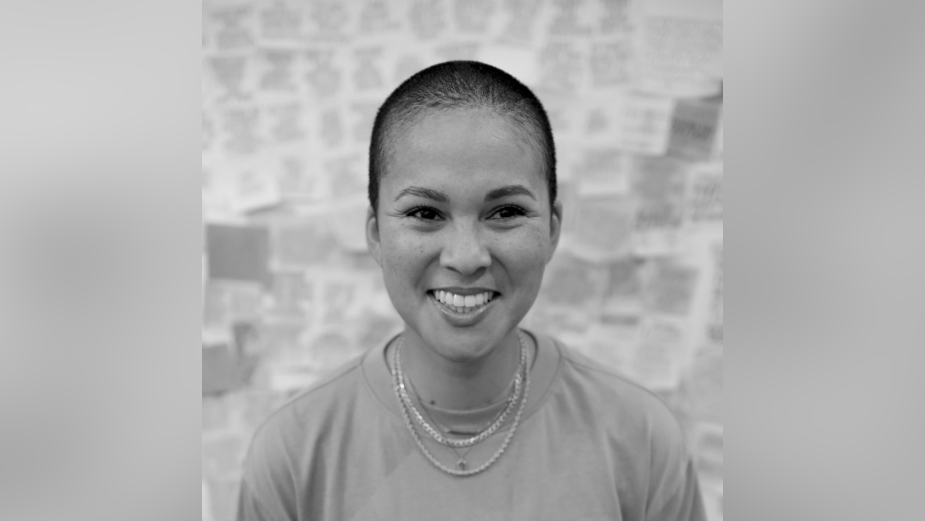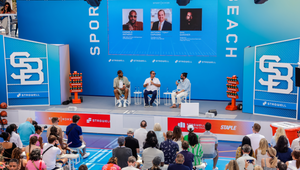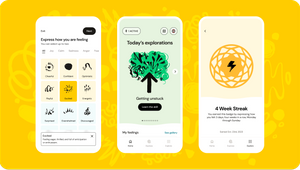
Code and Theory’s Stacy Tarver Patterson on ‘Injecting Flexible Authenticity’ into Your Brand

As part of our commitment to sharing knowledge and fostering inspiration, we are asking our top leaders to share their unique industry perspectives and personal journeys. Today, we kick off this series with our head of brand strategy Stacy Tarver Patterson.
Stacy spent 13 years at Nike working across brand strategy, planning, and marketing, including leading the marketing teams for Nike Beijing and Greater China Digital Commerce, two of Nike’s largest growth areas. She is currently CMO in residence at the Columbia Start-Up Lab and has served as managing director at West Ventures as well as co-founder and CMO of COR, a lifestyle science digital tech startup.
Here’s what she had to say about the latest industry trends and her own experiences.
Q> What’s the biggest trend impacting marketers right now?
Stacy> The shift from a cost-centre mentality to a more growth-oriented approach, requiring a change-centric mindset that can be dizzying at times. There used to be this culture of measuring success by the size of your budget and shifting from that to a growth and value-driving orientation is incredibly hard. It requires more entrepreneurial thinking across the board, some self-disruption, bringing transformative strategies to life and actively encoding all of that into the internal DNA.
Q> What’s your biggest source of inspiration and what can others learn from it?
Stacy> Outside of my “day job” I enjoy working with startup founders. To me, there is nothing more thrilling than simply being around people who are working with no blueprint. It’s kind of like exposure therapy for sitting inside of a paradigm shift, or a big question mark — at a certain point you have no other choice but to become comfortable with, and then maybe slightly addicted to, that feeling of being on the verge of change. I think all marketers can learn from this type of mentoring because it really is reverse mentoring too. These frequent repetitions get me out of the zone of “what I know” and get me thinking about “how I know” a lot more.
Q> What’s the biggest learning from your travels?
Stacy> I was on ex-pat assignment in Beijing and Shanghai for a few years pre-2020, and this time challenged almost everything I know about myself, my leadership style, and my work in brand and marketing strategy. While it is almost impossible to distil that experience down to one single learning, I did leave inspired around a heightened principle of intentional flexibility. Air pollution in the 2016 Winter in Beijing was the worst on record. My colleagues and I frequently found ourselves forced to cancel carefully-planned, high-production brand-building events, flushing high amounts of marketing dollars down the drain.
At the same time, an interesting societal behaviour emerged in Beijing, which internally at Nike we dubbed “DEAR” (Drop Everything And Run): Any time the real-time air quality index (AQI) reading would drop below 50 — a “good” AQI, akin to L.A. on an average day — people would flood the streets and parks on bikes, on foot, with kids and sports equipment in tow, no matter what time of day or day of the week it was. Some innovative and empathetic startup companies even started officially allowing a “fresh air leave” benefit.
Living through that experience taught me to always be on the lookout for opportunities to inject authentic flexibility and more “if this, then that” principles into brand platform work. We are trained as strategists to always obsess over the WHO, WHY, WHAT, and HOW of brand development, but I would argue that WHEN — specifically including foundational “trigger moments” and behaviour flows into your core brand strategy and infrastructure — can be just as important.
Q> What are some overlooked aspects of the CMO’s job?
Stacy> There are several shifts and patterns that are emerging from that meta-level trend:
Systems-thinking marketers who rise to the growth-driving challenge are increasingly feeling and acting like CEO candidates. Growth cuts across functions, and that ability to direct those interdependencies and make sustainable, shared investments in “new muscle” might be reasons why the CMO to CEO path is on the rise.
The scope of marketing is also quickly expanding to encompass the full end-to-end experience journey for many stakeholder groups simultaneously. The bundling and unbundling of front-end and mostly-digital touchpoint experiences, whether that’s with customers/employees/partners internationally, is spurring a lot of operating model evolutions and CMOs needing to focus more on their back of house to support.
Sometimes there is a sense of internal competition with newly formed digital orgs, CDO, and CIO teams. The term “shadow org” is whispered about more often lately. There’s anxiety around that, as CMOs increasingly need to play the role of translator across varying levels of tech literacy. But of course that starts with a culture of curiosity, experimentation, and light fluency with tech, which can be difficult to achieve when teams feel threatened.
Luckily, these are the kind of shifts we love and obsess over at Code.
Q> Why Code and Theory?
Stacy> My favourite restaurant in New York is a vegan, kosher dim sum spot called Buddha Bodai. It’s a small place, maybe 12 tables, and it’s split down the centre by an aisle. I was eating there with some visiting friends recently, and I was explaining how years ago you would literally see practising Buddhists from a nearby temple on one side of the aisle, and Jewish diet-abiding couples on the other side. I gravitate toward that “between two worlds” feeling, and people to share it with. The Code and Theory team is 50% engineers and 50% creative. And we get to help companies who are bridging similar gaps, whether internally across functions or with the big from/to’s coming in-market. The challenge we are solving is taking a change-centric stance, and making the whole of what’s possible greater than just the sum of the parts. Like vegan kosher dim sum: that’s definitely a 1+1=3 for me.
Q> What podcast, book, or movie should we all spend time with?
Stacy> I consume too many podcasts and books at the expense of seeing too few movies, so this question is hard to answer! What’s very top of mind for me right now are two academic research papers that I learned of in the past decade that have affected how I operate ever since. Valerie Purdie-Greenaway is an incredible social psychologist and science of DEI researcher at Columbia, who I’m lucky to get to collaborate with in real life. Her research on affirmation interventions has motivated me to think differently about how to handle stereotype threats in all sorts of outcome-focused compound processes. Katy Milkman is an engineer-turned-behavioural economist at Penn (who I hope to collaborate with in a future life!) Her research on temporal landmarks for motivating aspirational behaviour has impacted how I think about forming new habits and the timing of setting goals. Both of these research findings have subtle yet profound implications for experience journey planning, which is such an important aspect of how we “do branding” these days.
Stay tuned for more insights from our remarkable thought leaders, as we continue to bring you fresh perspectives and thought-provoking ideas that shape the future of our industry.















